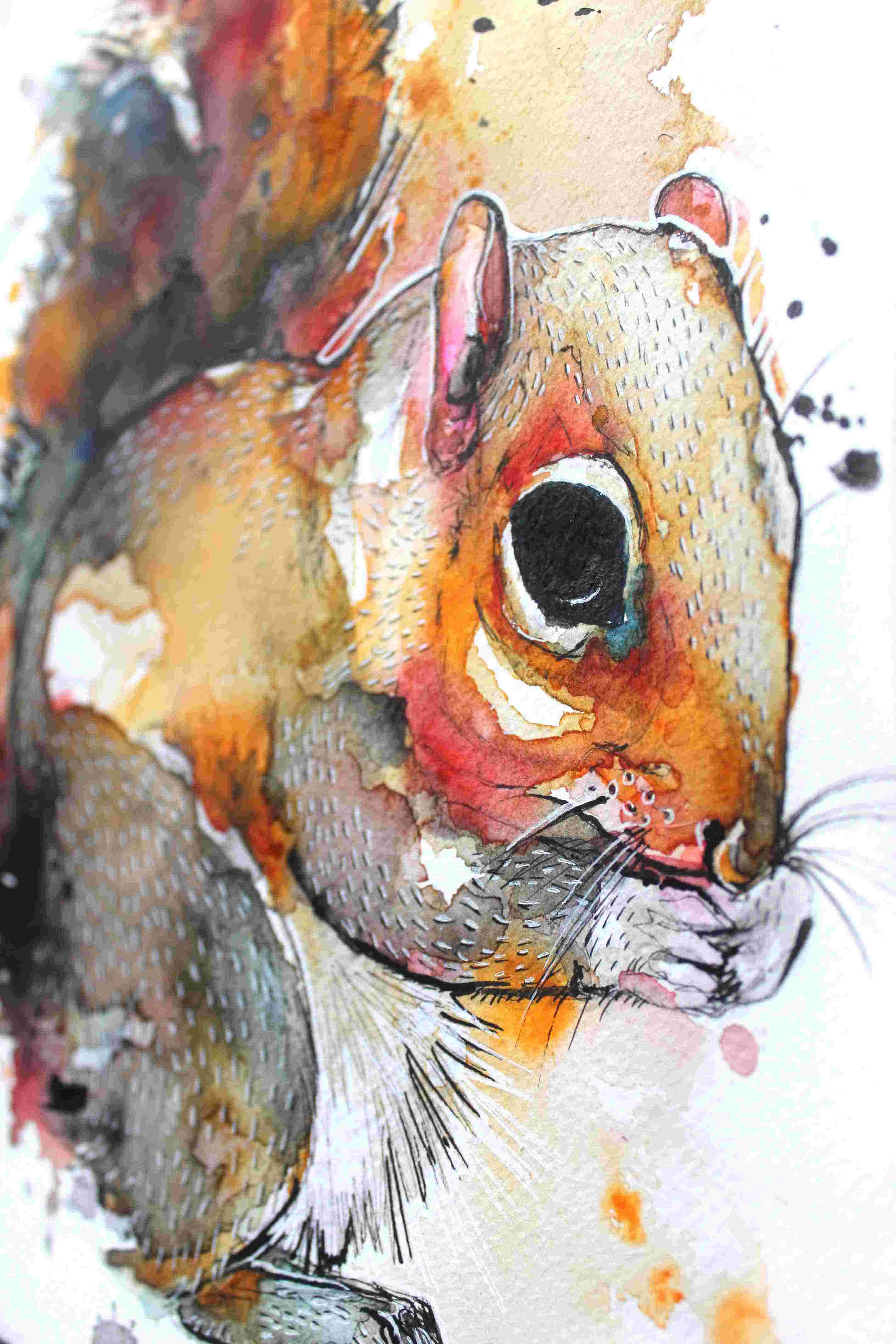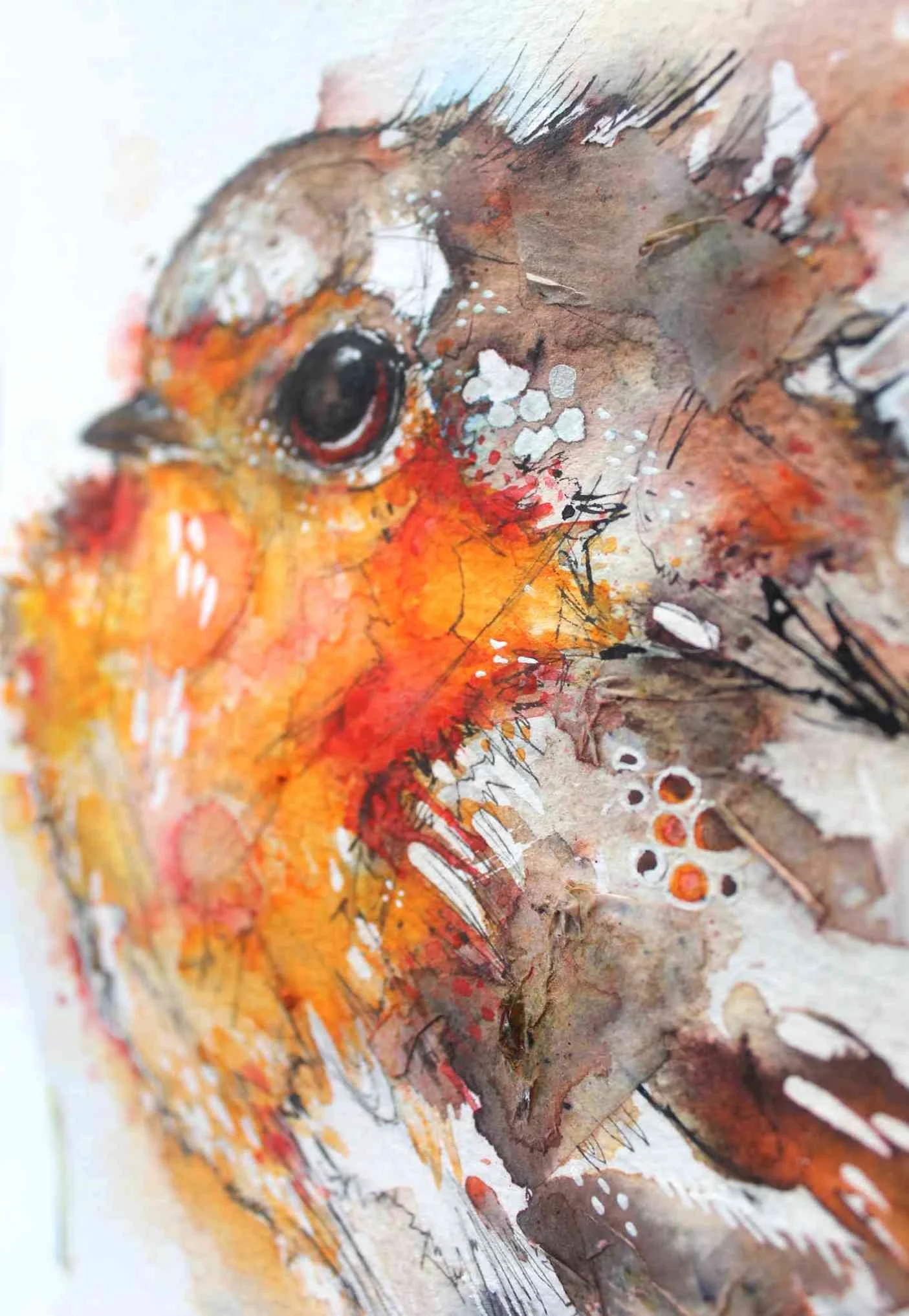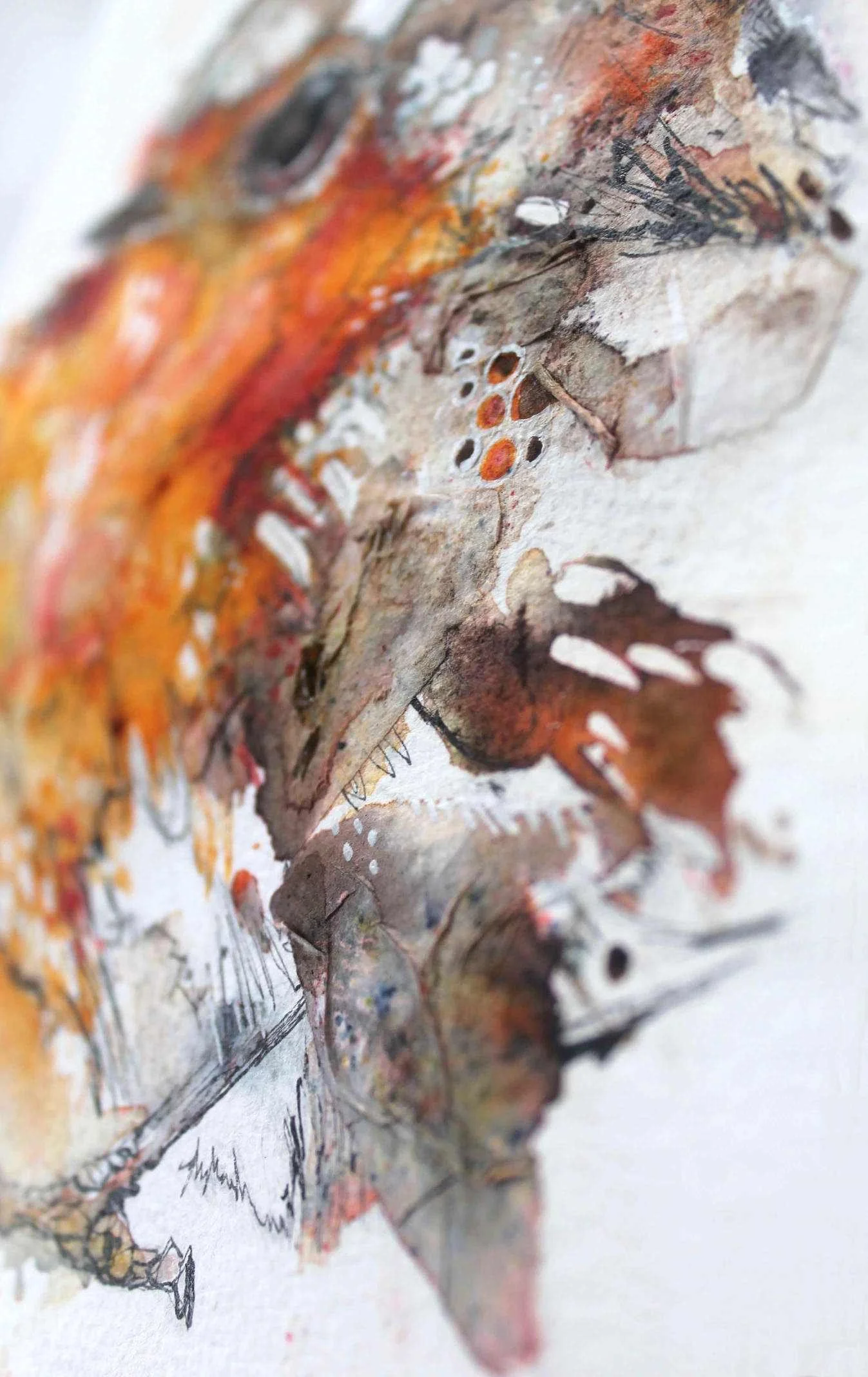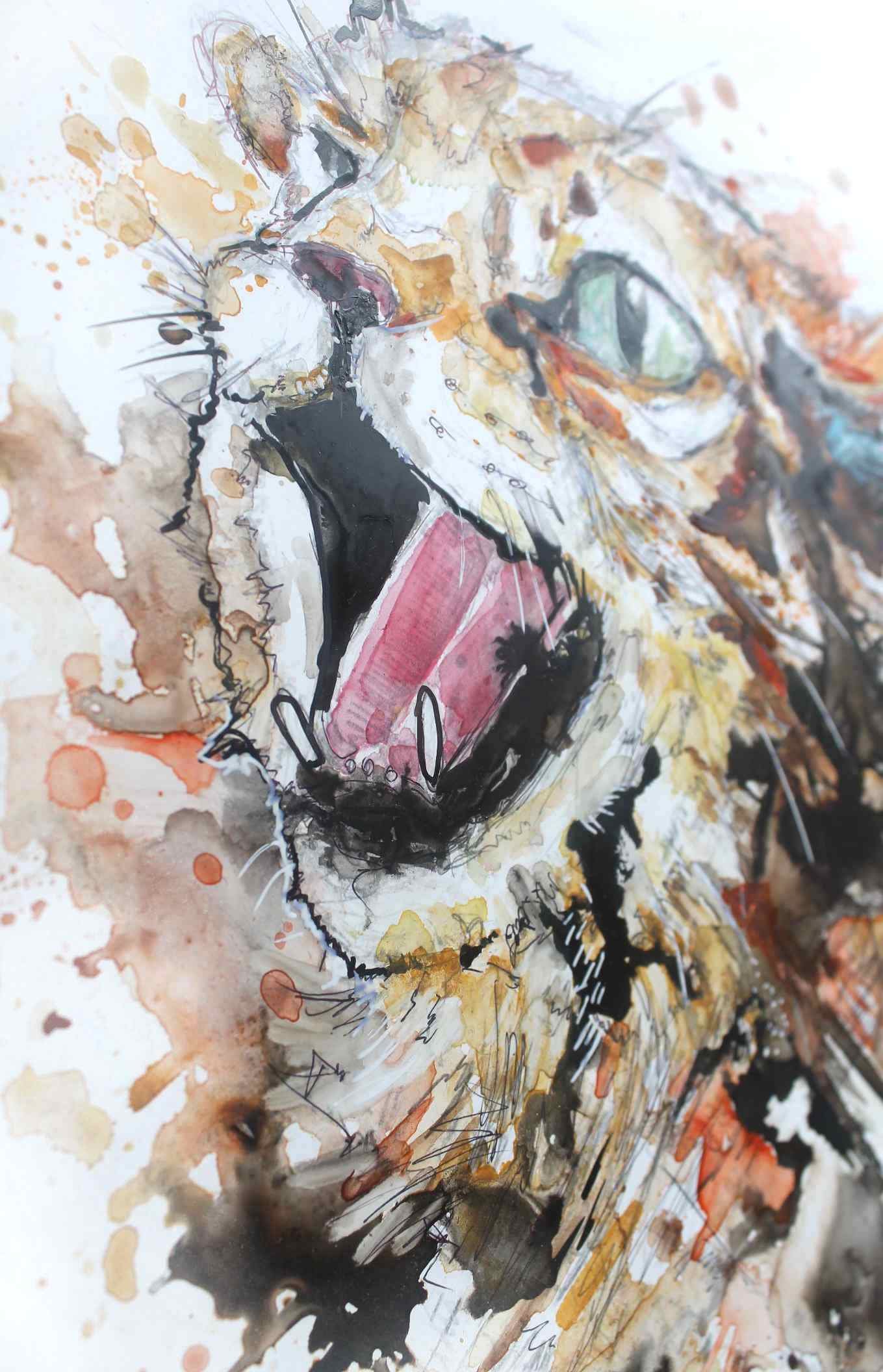A simple Brusho, watercolour and ink painting just sneaking in before the first month of 2017 is over! This squirrel was part of a trio of squirrels I created for a commission. I’m quite happy with this one, I concentrated on my favourite colour to use — orange! Because grey squirrels feature orange so why not abuse it?
Tissue Tufted Robin
I’ve been experimenting with watercolour ground, gesso, bindex and tissue paper, and I found that watercolour ground is mostly terrible but the combination of tissue paper and bindex gives some very interesting textures to a painting.
I glued on the tissue paper with the bindex over an inked picture, I let it dry then painted on the surface using watercolour paint and Brusho. The paint which has absorbed into the tissue dries as a dull hazy blur, which I really like!
This little A5 robin can be found in my shop and consists of masking fluid, tissue paper, Brusho, fineliner and Indian ink.
Flora Rabbit & Ask Laura
I’ve had quite a few enquiries from other budding artists generally asking about the creative process and any tips I could offer. I’m more than happy to oblige, sharing arty knowledge helps us all develop and progress!
I made this bushy green rabbit (on Bockingford rough watercolour block) in homage to a similar rabbit painting I created back in 2013, I wanted to really graft a lush environment onto an animal. In my recent piece I wanted be be less literal, Brusho pigment was the star of the show, providing me with rich greeny goodness.
I broke down my process visually, so you can get a good handle on how a piece comes together and I also wanted to summarise and address a few of the questions I have sent to me:
Victoria asks: Do you pen or paint first, and why?
I’ve always found it more comfortable and natural to pen first and paint second, it gives me a structure to work from, one which I cannot easily manipulate which means design and drawing quality is very important.
Bridin asks: How exactly do you use ink and watercolour when you are making work?
After establishing a drawing in pen and Indian ink, I apply faint layers of watercolour slowly and build them up when dry. After I’m happy with the applied colour, I identify areas I want to highlight and draw attention to by making large puddles or flecks of water on the paper which I then inject with strong ink colour.
Charlotte-Rose asks: What tools/mediums do you use?
I have found that watercolour, Brusho pigment, ink and Indian ink are my favoured media at the moment, something about the spontaneity and the risk of these mediums really appeal. I use paintbrushes, spray bottles, pipettes, straws and ink quills in my artwork, sometimes I may use a ruler to scrape off some pastel dust onto a piece if it’s screaming for a dusting — particularly if my work features insects.


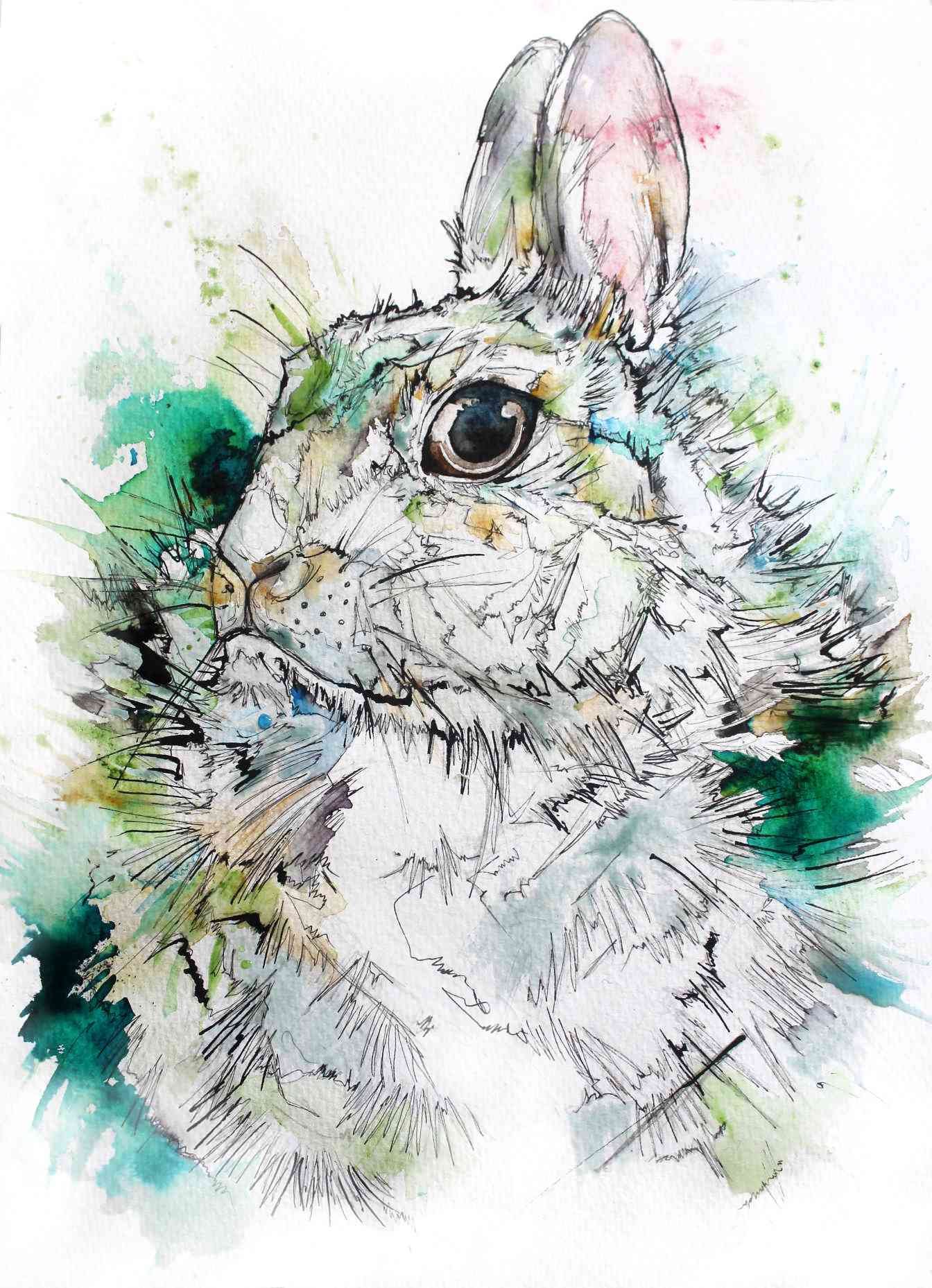

Q: What is your best advice?
As boring as it might sound, don’t stress, be patient and PRACTICE! I can’t really save anyone any time. As long as you are enjoying the process, over time you’ll definitely improve, unimaginably so if you put the time and effort in.
The aim of my website was to share the progress of my artwork through the years with all the naivety and embarrassment to help illustrate to other budding artists that no one is great overnight — we all start rather crap.
Every mistake is a lesson, it used to take me 5-7 terrible pieces to make one I was somewhat happy with. But with three years of practice and perseverance I’ve been able to produce work of a reasonable and even good quality without wasting a single sheet of watercolour paper.
(And in spite of me religiously telling my art teachers at college I couldn’t paint!)
Mischievous Raccoon
Raccoons are found more commonly in North America, but thanks to deliberate introductions and escapees can also be found in places such as Japan and even Europe!
Common raccoons are black, grey and white from a distance, but I really ran with the browns and yellows which also exist in the raccoons fluffy coat, but I’ve manipulated the colours in photo editing software and produced a monochrome version.
I still prefer the original, I’ve painted my finger tips with white, brown and grey ink and pressed them into the painting to keep that thieving, sticky, grubby raccoon stereotype alive, as they are excellent opportunists!
Blue Tit
A common sight in my garden - when the sparrows aren’t chasing them away from the fat balls! I’ve tried to paint a blue tit several times during my artistic journey, and I’ve never been able to make them pudgy, vibrant or cute enough but this time I feel like it is a better effort.
Painted using Brusho, fineliner, watercolours and Pen-White by Dr. Ph. Martin’s — which is the best white ink I’ve discovered after getting through copious amounts of other brands, not toothpastey or watery, just great white ink!
European Wildcat and Cheetah
I’ve been practicing painting cats as in the past I’ve felt they’ve been difficult to paint due to their flatter faces. The European wildcat I’ve painted on Yupo paper, and the cheetah I’ve painted on 100lb watercolour paper.
I wanted to paint the cheetah the same way as a fox I created in 2015, by leaving sections unpainted. I want to explore this much more in future paintings, I really like this style!
